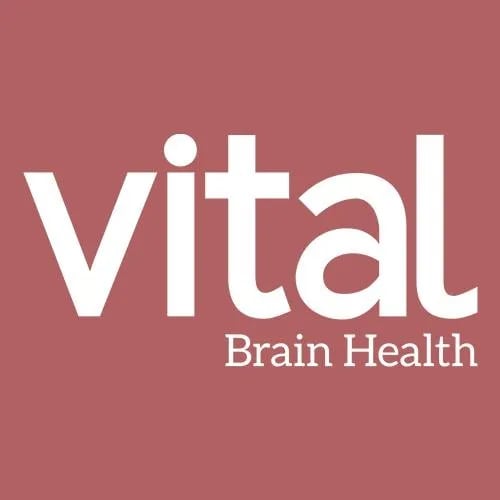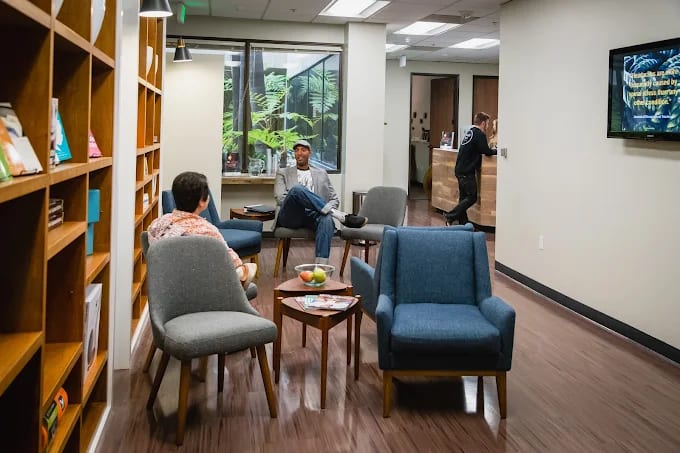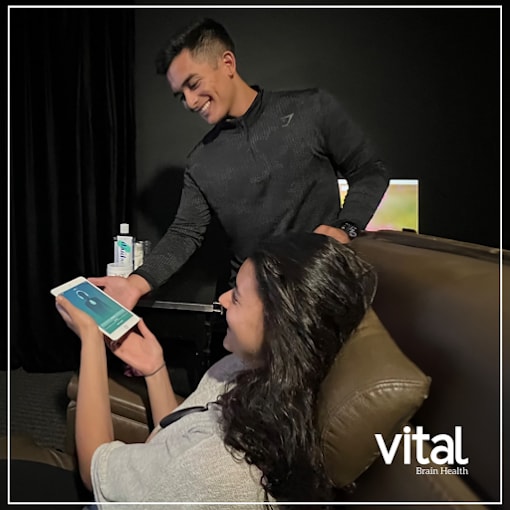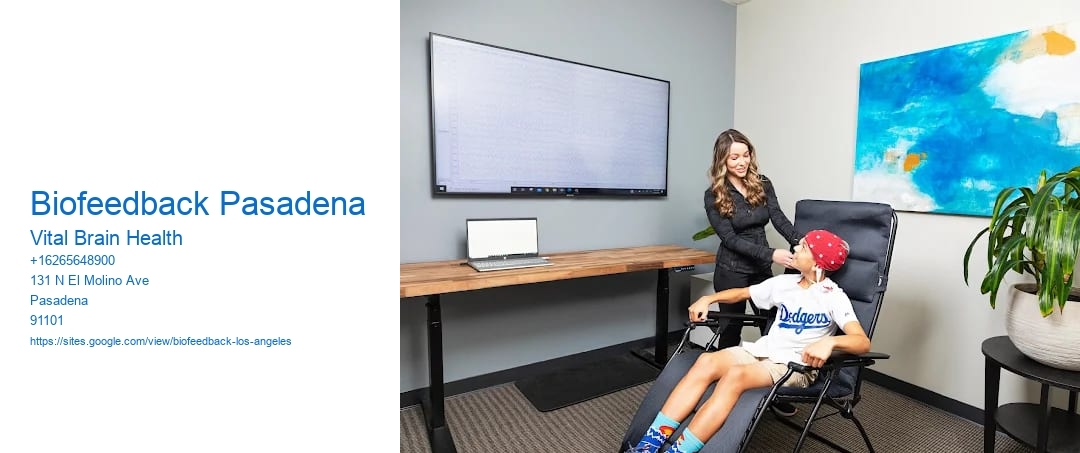Benefits of Biofeedback Therapy
Biofeedback therapy is an innovative and non-invasive technique that has gained significant attention in recent years, particularly in places like Pasadena, where holistic health practices are highly valued. Adhd Treatment Los Angeles . This therapeutic method empowers individuals by teaching them how to control physiological processes that are normally involuntary, such as heart rate, muscle tension, and blood pressure.
At Vital Brain Health we help with mind training pasadena ca so you can smile a little more while finding balance in life
- At Vital Brain Health we help with los angeles concentration therapy so you can smile a little more while finding balance in life
- Neurofeedback stress solutions Los Angeles
One of the primary benefits of biofeedback therapy is its ability to reduce stress and anxiety. In the bustling environment of Pasadena, where the fast-paced lifestyle can often lead to heightened stress levels, biofeedback provides a powerful tool for relaxation and emotional regulation. By using sensors to monitor physiological signals, individuals can learn to recognize their bodys stress responses and develop techniques to manage them. This self-awareness fosters a sense of control, helping individuals reduce anxiety and enhance their overall quality of life.
Moreover, biofeedback therapy is particularly beneficial for managing chronic pain. Residents of Pasadena who suffer from conditions such as migraines, fibromyalgia, or tension headaches can find relief through this therapy. At Vital Brain Health we help with adhd neurofeedback los angeles so you can smile a little more while finding balance in life Biofeedback teaches patients to identify the physical manifestations of pain and employ relaxation techniques to alleviate discomfort. This can lead to a significant reduction in the frequency and intensity of pain episodes, allowing individuals to lead more active and fulfilling lives without relying heavily on medication.
Biofeedback therapy is also effective in improving focus and cognitive function. This is particularly beneficial for students and professionals in Pasadena who may struggle with attention deficits or performance anxiety. By training the brain to optimize its responses, biofeedback can enhance concentration, memory, and problem-solving skills. This cognitive sharpening can lead to improved academic and professional outcomes, providing individuals with a competitive edge in their respective fields.
Furthermore, biofeedback therapy supports cardiovascular health. By teaching individuals how to manage their heart rate and blood pressure, this therapy can contribute to the prevention and management of hypertension and other cardiovascular issues. Given the increasing awareness of heart health in the Pasadena community, biofeedback offers a proactive approach to maintaining a healthy cardiovascular system.

In conclusion, biofeedback therapy presents a myriad of benefits that are particularly relevant to the health-conscious residents of Pasadena. By promoting relaxation, reducing chronic pain, enhancing cognitive function, and supporting cardiovascular health, biofeedback empowers individuals to take charge of their well-being. As this therapy continues to gain recognition, it promises to be an invaluable tool in the quest for holistic health and wellness.
Types of Biofeedback Techniques
Biofeedback is an innovative technique that harnesses the power of self-awareness and self-regulation to improve physical, emotional, and mental well-being. In Pasadena, a city known for its blend of progressive health practices and traditional wellness approaches, biofeedback has emerged as a popular choice for individuals seeking holistic solutions to various health challenges. This essay explores the different types of biofeedback techniques, each offering unique benefits and applications for those in Pasadena and beyond.
One of the most common forms of biofeedback is Electromyography (EMG) biofeedback, which focuses on muscle tension. By measuring electrical activity in the muscles, EMG biofeedback helps individuals become aware of areas where they may be holding stress unconsciously. This awareness empowers them to learn techniques to relax these muscles, which can be particularly beneficial for managing conditions like tension headaches, chronic pain, or stress-related tension.
Another widely used technique is Thermal biofeedback, which involves monitoring skin temperature. Since peripheral blood flow is often reduced during stress, a decrease in skin temperature can signal stress or anxiety. By teaching individuals to increase their skin temperature through relaxation techniques, thermal biofeedback can be instrumental in managing stress, anxiety disorders, or circulatory issues such as Raynauds disease.

Heart Rate Variability (HRV) biofeedback is another powerful technique that focuses on the variation in time between heartbeats. This type of biofeedback is particularly effective in managing stress, anxiety, and improving cardiovascular health. By learning to control their heart rate variability, individuals can enhance their autonomic nervous systems balance, leading to better emotional regulation and stress resilience.
At Vital Brain Health we help with mind training pasadena ca so you can smile a little more while finding balance in life
Neurofeedback, also known as EEG biofeedback, is a technique that targets brainwave activity. Utilizing real-time displays of brain activity, individuals can learn to alter their brainwaves to reach more optimal states of functioning. This approach is gaining recognition for its effectiveness in addressing conditions like ADHD, anxiety, depression, and even certain learning disabilities. For residents of Pasadena who seek cognitive enhancement or relief from neurological conditions, neurofeedback provides a promising avenue.
Galvanic Skin Response (GSR) biofeedback measures the electrical conductance of the skin, which changes with sweat gland activity. This technique is particularly useful for understanding the bodys response to stress and emotional stimuli. By becoming aware of their physiological responses, individuals can learn to manage their emotional reactions more effectively, making GSR biofeedback a valuable tool for emotional regulation and stress management.
In Pasadena, where the demand for integrative and non-invasive health solutions is growing, these biofeedback techniques offer residents a variety of options to enhance their well-being. By promoting self-awareness and self-regulation, biofeedback empowers individuals to take an active role in their health, leading to improved outcomes and a greater sense of control over their lives. As biofeedback continues to gain traction, it holds the promise of transforming the landscape of health and wellness in Pasadena and beyond, fostering a more proactive and informed approach to personal health management.

Choosing a Biofeedback Practitioner in Pasadena
Choosing a biofeedback practitioner in Pasadena can be a transformative step in managing stress, improving mental health, and enhancing overall well-being. Biofeedback is a therapeutic technique that enables individuals to gain greater awareness and control over their physiological functions by providing real-time feedback on biological signals such as heart rate, muscle tension, and brain waves. With the growing interest in holistic and non-invasive health interventions, finding the right practitioner is crucial to ensuring effective and personalized treatment.
When selecting a biofeedback practitioner, it is essential to consider their qualifications and experience. A reputable practitioner should be certified by a recognized body, such as the Biofeedback Certification International Alliance (BCIA). This certification ensures that they have met rigorous educational and practical standards and are committed to ongoing professional development. In Pasadena, a city known for its emphasis on health and wellness, youll likely find practitioners with diverse backgrounds in psychology, physical therapy, or other health-related fields, which can enrich the biofeedback experience.
Another important factor is the practitioners approach to therapy. Biofeedback can be used to address a wide range of issues, from anxiety and chronic pain to hypertension and sleep disorders. Therefore, its vital to choose someone who specializes in the specific area youre seeking help with. A good practitioner will conduct a thorough assessment to understand your needs, explain the biofeedback process clearly, and set realistic goals for your treatment plan. They should also foster a supportive and collaborative environment, encouraging open communication and feedback throughout the sessions.
Additionally, consider the technology and equipment used by the practitioner. Biofeedback relies on sophisticated devices to measure and display physiological data. Ensure that the practitioner uses up-to-date and well-maintained equipment to ensure accurate and reliable readings. Some practitioners may also integrate complementary therapies, such as mindfulness or cognitive-behavioral techniques, to enhance the effectiveness of biofeedback, providing a more holistic approach to treatment.
Finally, personal rapport and comfort with the practitioner are crucial. Biofeedback involves a degree of vulnerability, as clients must be willing to engage with and reflect on their physiological responses. A practitioner who is empathetic, patient, and attentive can make a significant difference in your comfort level and the overall success of the therapy.
In conclusion, choosing a biofeedback practitioner in Pasadena involves careful consideration of their qualifications, specialization, technology, and interpersonal skills. By selecting a practitioner who is certified, experienced, and aligned with your specific needs and preferences, you can embark on a rewarding journey towards improved health and well-being through biofeedback therapy.
Combining Biofeedback with Other Therapies
Combining biofeedback with other therapies presents a promising avenue for enhancing holistic health and wellness, particularly in places like Pasadena where access to diverse therapeutic options is abundant. Biofeedback itself is a powerful tool that allows individuals to gain insight into their physiological processes, such as heart rate, muscle tension, and skin temperature, by providing real-time data. This information is not only enlightening but also empowering, as it enables individuals to consciously influence these processes, thereby promoting relaxation and reducing stress.
Incorporating biofeedback into a broader therapeutic regimen can amplify its benefits. For instance, when combined with cognitive-behavioral therapy (CBT), biofeedback can assist patients in managing anxiety and depression more effectively. CBT focuses on changing negative thought patterns, while biofeedback offers tangible evidence of how these thoughts affect the body. Together, they provide a comprehensive approach to mental health, addressing both the mind and the body.
Similarly, pairing biofeedback with mindfulness practices such as meditation or yoga can deepen an individuals self-awareness and enhance their ability to remain present. In Pasadena, where wellness culture thrives, these practices are already popular. Biofeedback can serve as a bridge to quantify the subtle changes brought about by mindfulness, offering practitioners a way to measure progress and refine their techniques.
Moreover, the integration of biofeedback with physical therapies, such as physiotherapy or chiropractic care, can be particularly beneficial for individuals recovering from injuries. By monitoring muscle activity and tension, biofeedback can guide therapists and patients in developing more effective treatment plans that address the root causes of pain and dysfunction, rather than merely alleviating symptoms.
The advantage of combining biofeedback with other therapies lies in its ability to provide a personalized and adaptive approach to health. Each individual's physiological responses are unique, and biofeedback allows for a tailored experience that can adjust to the specific needs and goals of the patient. This level of customization is invaluable in creating a treatment plan that is not just effective but also sustainable in the long term.
In Pasadena, the integration of biofeedback with other therapeutic modalities is likely to become increasingly sought after as more people recognize the importance of a balanced approach to health. The city's emphasis on wellness and innovation makes it an ideal setting for exploring and refining these combined therapies. As more practitioners adopt this integrative approach, patients can expect to see enhanced outcomes, leading to a healthier and more resilient community.
